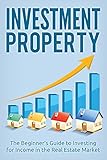Posts
Investing: Real Estate: Investment Property (Money Passive Income Stock Market) (Investing Basics Financial Planning Property) Reviews
/in Investing Real Estate /by Robert GoodmanInvesting: Real Estate: Investment Property (Money Passive Income Stock Market) (Investing Basics Financial Planning Property)
LIMITED TIME BONUS INCLUDED: FREE BOOK Foreclosure Investing: Generating Wealth In Foreclosure Real Estate
Do You Want To Learn How To Earn A Passive Income Through Real Estate?
Today only, get this Amazon bestseller for just .99. Regularly priced
at .99. Read on your PC, Mac, smart phone, tablet or Kindle device.
Lots of people get introduced to the great concept of real estate investing by a seminar, infomercial, or real estate investing books.
Price:
[/random]
Find More Investing Real Estate Products
How to Landscape With Lava Rock : Landscaping Basics
/in Blog, How To Start A Landscaping Business /by Robert Goodman

Subscribe Now: http://www.youtube.com/subscription_center?add_user=ehowatHomeChannel Watch More: http://www.youtube.com/ehowatHomeChannel Lava rock makes a r…
Video Rating: 3 / 5
Tom Wallace discusses his upcoming book: S&OP – Beyond the Basics
/in Blog, Sales And Operations Planning /by Robert Goodman
Listen to S&OP expert Tom Wallace discuss his upcoming book about the advanced uses of S&OP. Visit http://www.steelwedge.com to learn more about sales and operations planning. Visit http://www.tf…
Video Rating: 0 / 5
Risk Management Basics For Stock Market Traders
/in Blog, Project Risk Management Plan /by Robert GoodmanTo be a successful stock market trader, you must follow a risk management plan. A risk management plan helps preserve trading capital while earning consistent returns. It also helps curb your emotions while enforcing self-discipline. The main elements of risk management include determining the risk amount and position size, identifying the stop price, and examining the risk/reward ratio.
Determine the Risk Amount
The risk amount is the maximum amount you are willing to risk on any given trade. It is usually a set percentage of your total account value. A common rule of thumb is to risk 1-3% of your total account value with each trade. This amount should be reduced in periods of high volatility. So, a trader with a capital of $ 50,000 that risks 2% per trade would risk $ 1000 on each trade.
Identify Stop Price
Before entering a trade, you should set a stop loss price in order to help minimize losses and the influence of emotions. This price represents the level at which your position will be closed if the trade moves against you. It will be triggered automatically when the stock price trades at or past that level. Keep in mind that slippage may occur and you may lose more than you had initially calculated. A stop loss order guarantees execution, but the price may move further against you before the trade is actually executed.
Calculate Position Size
Once you have determined the risk amount and stop price, you can then calculate number of shares that you will trade. This number, or position size, can be calculated by dividing the risk amount by the risk-per-share. The risk-per-share is the difference between the stop price and the entry price. So, assume that your maximum risk amount is $ 1000 per trade. If your entry price is $ 30 and your stop loss price is $ 28, then the risk-per-share would be $ 2. In order to calculate the position size, simple divide $ 1000 by $ 2. Your position size would be 500 shares.
Entry price $ 30 Stop price $ 28 = $ 2 Risk-per-share
$ 1,000 / $ 2 = 500 shares
Examine Risk/Reward
Examining the risk/reward ratio is extremely important in determining whether or not a reasonable profit potential exists relative to the risk. It is an extremely important component to your overall money management strategy. The reward-per-share is the difference between the target price and the entry price. The risk-per-share is the difference between the entry price and the stop price. The risk/reward ratio should be established before entering a trade and should never be less than 1:3. In order words, the profit value for every trade setup must be at least three times larger than the risk value. If your entry price is $ 30 and your target price is $ 36, then the reward-per-share would be $ 6. With a stop loss of $ 28, your risk/reward ratio would be 2:6, or 1:3.
Entry price $ 30 Stop price $ 28 = $ 2 Risk-per-share
Target price $ 36 Entry price $ 30 = $ 6 Reward-per-share
2:6 = 1:3 Risk Reward Ratio
More Money Management Tips
For online day trading, only trade stocks that have an average trading volume of more than 1,000,000 shares for day. For swing trading, only trade stocks that have an average trading volume of more than 300,000 shares per day. Also, you should only trade stocks that are priced above $ 5. Technical analysis may fail on stocks below this price since they can be easily manipulated.
Summary
Understanding and following proper stock trading risk management guidelines will help you minimize your losses while earning consistent returns. Strictly following your money management rules will help keep the emotion out of trading and the odds in your favor. Successful traders always stick to their money management plan and do not let their emotions take over.
This article was written by Mary Hedden, owner of http://www.techtradersystem.com. TechTraderSystem.com provides valuable information about technical trading systems and technical analysis of stock charts that can be used to save time and increase stock trading profits. Please click here for more information about risk and money management for stock market traders.
Blogger: Beyond the Basics: Customize and promote your blog with original templates, analytics, advertising, and SEO (From Technologies to Solutions) Reviews
/in Blog, Template /by Robert GoodmanBlogger: Beyond the Basics: Customize and promote your blog with original templates, analytics, advertising, and SEO (From Technologies to Solutions)
In Detail Blogger is a blog publishing system from Google with a friendly interface specifically designed for creating and maintaining weblogs. It allows users to easily create dynamic blogs with great content and many outstanding features including RSS feeds, link-backs, photo slideshows, and integration with popular Google applications like Picasa. Its versatility and ease of use has attracted a large, enthusiastic, and helpful community of users. If you want to create powerful, fully-featu
List Price: $ 39.99
Price:



